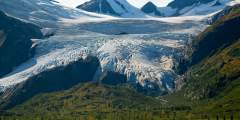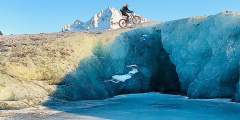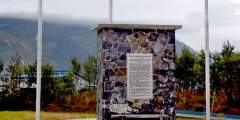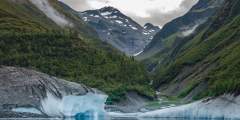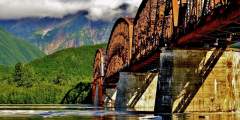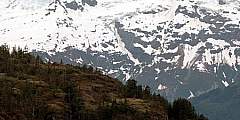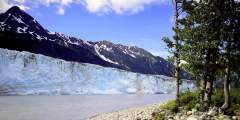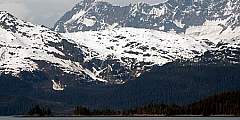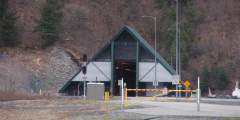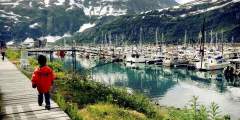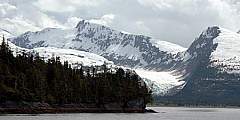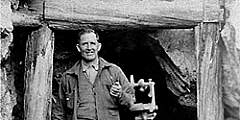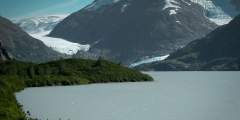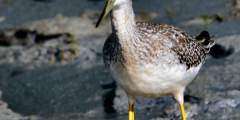Prince William Sound Points of Interest
Show Map
Points of Interest
Bald eagles. Brown bears. Black bears. Humpback whales. Orcas. Stellar sea lions. Harbor seals. Sea otters. Moose. Wolves. 200,000 seabirds of over 220 different species. You can find this impressive collection of iconic Alaskan animals right in Prince William Sound. Here’s where to go in each town for the best wildlife-viewing opportunities!
In Prince William Sound you’ll find some 150 glaciers packed into an area just 70 miles wide. These are the few that you shouldn’t miss!
One of the most visited natural attractions along the Richardson Highway, this four-mile-long glacier descends almost to pavement and is easy to approach on foot. The state recreation site features parking, pit toilets, and a covered pavilion with a model of the glacier and interpretive signs, all close to small lake.
This 1.5‑mile hike is an easy stroll down to the lake that offers a great payoff in the form of a gorgeous glacier. If you’re here in winter and the conditions are right, it’s a great spot for wilderness ice skating, fat biking, or cross-country skiing!
In 1943, The Army Corps of Engineers built a monument commemorating the effort of building the 2.5 mile long tunnel through the solid rock of Maynard to realize the vision of Whittier as a year-round ice-free port. The monument was recently restored in a new location with the original plaque.
If you’ve yet to set eyes on an iceberg, this is your chance: Gorgeous Valdez Glacier Lake is often home to large chunks of floating ice that have calved off from the Valdez Glacier. Appreciate the chunks of ice from shore, or join a guided kayak expedition to paddle around the ice
Construction of this early-1900s bridge cost a whopping (at the time) $1.4 million, which earned it the nickname Million Dollar Bridge. But the bridge quickly earned its keep, allowing the railroad to haul copper from Kennicott to the port of Cordova.
In 1899, the Harriman Glacier extended all the way to here, leaving only a tight passage through which the ship could fit. Harriman made the gutsy decision to sail through it, allowing them to be the first explorers and probably the first humans to see this magnificent fjord. The glacial moraine still extends from the shore out to this point and you can see it just 6 feet below the surface at low tide.
This very active glacier forms a wall along the fabled Copper River near a historic railroad route that once serviced the world’s largest copper mine. NOTE: A bridge at Mile 36 of the Copper River Highway is currently (2020) impassable, with repairs not expected for several years. Child’s Glacier is not currently accessible by road. Contact Cordova Ranger District for current venders providing transportation options to the far side. ...more
This point separates College Fjord and Barry Arm. You can see dead spruce trees which stand as silent testimony to the destruction of the 1964 earthquake. The land sunk more than 6 feet exposing the roots to saltwater and drowning the trees.
Driving from Anchorage to Whittier to play in Prince William Sound? You’ll go through Anton Anderson Memorial Tunnel — the longest (2.5 miles) highway tunnel in North America, and the first designed for ‑40 Fahrenheit temperatures and 150 mph winds! The one-lane tunnel must be shared by cars and trains traveling in both directions, and it usually needs to be aired out in between trips (with jet turbine ventilation, another first!). This unique… ...more
Harbor seals and sea otters are common sights in the Whittier Small Boat Harbor. You might also see salmon enthusiastically leaping from the water, a sight that cues locals to run for their fishing poles. King salmon run from May through early-July. From late-July through early-September, a run of silver salmon brings anglers from throughout Southcentral Alaska.
Coghill Point is the terminus of the Coghill River, a world-famous red salmon fishery. During the sockeye salmon opener (mid-July to early-August), hundreds of commercial gill netters scatter across the area pulling in the bounty.
Built during WWII as a top-secret military project, today Whittier is a great jumping-off place to explore Prince William Sound. To connect Whittier with the rest of the Alaska Railroad, during the war the military constructed a massive tunnel. Today the expanded tunnel is the longest combined rail and highway tunnel in North America.
The area of Whittier has long served as passage between Prince William Sound and Turnagain Arm. The Alaska Engineering Expedition envisioned a rail line out to this largely unsettled area back in 1914, but it was the U.S. Army that made Whittier where and what it is.
It’s free to go this far by car, and you’ll get a picture-perfect shot of Portage Glacier.
Cordova is the sea otter capitol of the world. They pup year-round, and there are many great places to see them!
Every year, millions of shorebirds migrate from South America to Alaska, where they stop to rest and feed on the Copper River Delta mud flats at Hartney Bay. This area also has potential for great bear viewing when the salmon are running.


